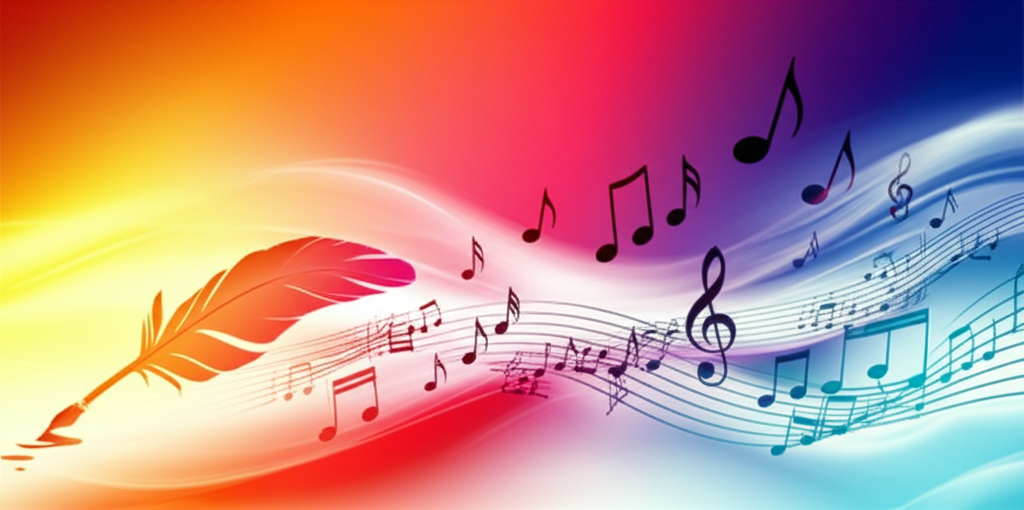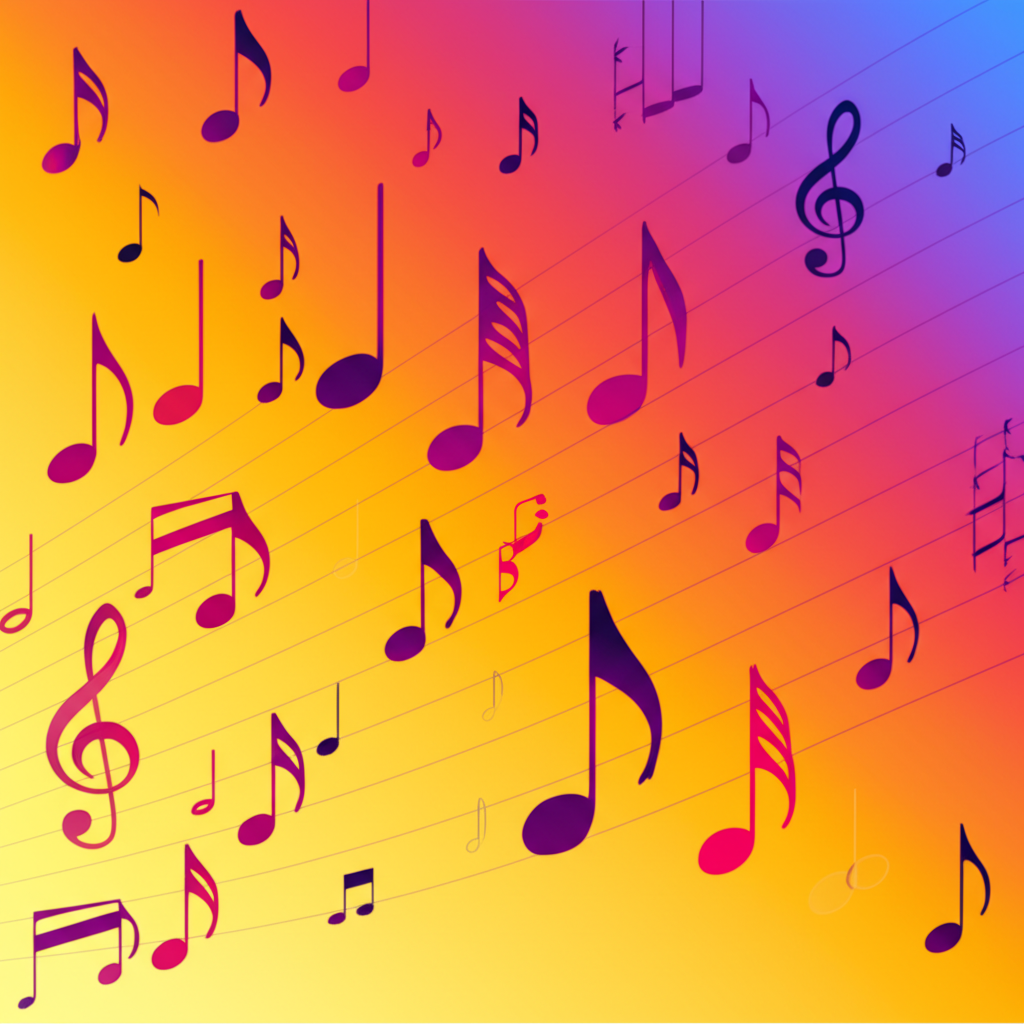
What is Sheet Music? Understanding Musical Scores and Notation

b4n1
June 14, 2025, 7:04 p.m.
What is Sheet Music? Understanding Musical Scores and Notation
Summary:
Sheet music is the written language of music - a visual representation of musical sounds using symbols, lines, and spaces. It allows musicians to preserve, share, and perform music across time and distance, serving as the universal written communication system for musical ideas.
Keywords:
sheet music, musical notation, score, staff, clef, musical symbols, written music, music reading, musical manuscript
Introduction:
Just as books use letters and words to capture spoken language, sheet music uses notes and symbols to capture musical sounds. Sheet music is humanity's way of writing down music so it can be preserved, shared, and performed by anyone who can read the notation. From simple folk songs to complex symphonies, sheet music makes it possible for musical ideas to travel across centuries and continents.
What is Sheet Music?:
Sheet music is a written representation of music that uses standardized symbols to indicate:
- Pitch: How high or low notes sound
- Duration: How long each note lasts
- Timing: When notes start and stop
- Dynamics: How loud or soft to play
- Expression: How to interpret the music emotionally
Basic Components of Sheet Music:
Every piece of sheet music contains several essential elements that work together to communicate musical information:
The Staff:
Five horizontal lines where notes are placed. The position of notes on these lines and spaces indicates their pitch.
Why Do We Need Sheet Music?:
Without sheet music, music would exist only in the moment it's performed. Sheet music allows us to:
- Preserve musical compositions for future generations
- Share music with musicians we've never met
- Learn music that was written centuries ago
- Communicate complex musical ideas precisely
- Study and analyze musical structures
- Teach music systematically
Types of Musical Notation:
Sheet music comes in different forms depending on the instrument and musical style:
Lead Sheets:
Simple notation showing melody and chord symbols, common in jazz and popular music.
Full Scores:
Complete orchestral music showing all instruments on separate staffs.
Piano Music:
Uses two staffs (treble and bass clef) for the right and left hands.
Key Symbols in Sheet Music:
Sheet music uses many symbols, but some are fundamental:
- Clef: Determines which pitches the staff lines represent
- Time Signature: Shows how beats are organized
- Key Signature: Indicates which notes are sharp or flat
- Notes: Show pitch and duration
- Rests: Indicate periods of silence
- Bar Lines: Divide music into measures
Reading vs. Playing by Ear:
Many musicians debate whether it's better to read sheet music or play by ear. Both skills are valuable:
- Sheet music reading: Allows precise communication and learning complex pieces
- Playing by ear: Develops musical intuition and improvisation skills
- Best approach: Develop both skills for maximum musical flexibility
Different Musical Styles:
Sheet music adapts to different musical genres:
Classical Music:
Highly detailed notation with precise dynamics, articulations, and expressions.
Jazz Music:
Often uses lead sheets with chord symbols, allowing for improvisation.
Popular Music:
May use chord charts, tabs for guitar, or simplified notation.
Historical Development:
Musical notation has evolved over more than a thousand years:
- Ancient times: Simple symbols indicated pitch direction
- Medieval period: Development of staff lines
- Renaissance: Standardization of note shapes and values
- Modern era: Addition of detailed expression markings
- Digital age: Computer notation and electronic distribution
Learning to Read Sheet Music:
Reading sheet music is like learning any language - it takes practice but follows logical patterns:
- Start with simple melodies using few notes
- Practice identifying notes on the staff
- Learn basic rhythm patterns
- Gradually increase complexity
- Connect what you see to what you hear
Simple Reading Exercise:
Digital Sheet Music:
Technology has revolutionized how we create, share, and use sheet music:
- Music notation software: Creates professional-looking scores
- Digital distribution: Instant access to millions of scores
- Interactive features: Playback, transposition, and practice tools
- Tablet readers: Portable, searchable music libraries
Cultural Variations:
While Western notation is widespread, other cultures have their own systems:
- Chinese notation: Uses numbers and symbols
- Indian classical: Complex system indicating microtones
- Arabic notation: Incorporates quarter-tones
- Tablature: Shows finger positions rather than pitches
Benefits of Understanding Sheet Music:
Learning to read sheet music provides numerous advantages:
- Access to vast musical repertoire
- Better communication with other musicians
- Deeper understanding of musical structure
- Ability to learn music independently
- Enhanced musical memory and analysis skills
Common Misconceptions:
Many people have incorrect ideas about sheet music:
- Myth: "You must read music to be a good musician"
- Reality: Many excellent musicians play by ear, but reading adds valuable skills
- Myth: "Sheet music kills creativity"
- Reality: Notation is just a tool - creativity comes from the musician
Fun Facts:
The oldest known piece of written music is over 3,400 years old! Before printing, sheet music was copied by hand, making it extremely valuable. Beethoven's original manuscripts are now worth millions. The largest piece of sheet music ever created was over 40 feet long. Modern computer programs can convert audio recordings back into sheet music notation.
Practical Applications Today:
Sheet music remains relevant in our digital world:
- Professional orchestras and bands use scores for performance
- Music students learn theory and technique through notation
- Composers use notation software to create and share new works
- Music teachers use sheets to structure lessons and assignments
- Singers use sheet music to learn complex vocal parts
Conclusions:
Sheet music is humanity's ingenious solution to the challenge of preserving and sharing musical ideas. While technology continues to change how we create and consume music, the fundamental concept of written musical notation remains as important as ever. Whether you're a complete beginner or an experienced musician, understanding what sheet music is and how it works opens up a world of musical possibilities and connects you to centuries of human musical expression.
References:
Rastall, Richard (2001). The Notation of Western Music. Dent.
Stone, Kurt (1980). Music Notation in the Twentieth Century. W. W. Norton.
Gould, Elaine (2011). Behind Bars: The Definitive Guide to Music Notation. Faber Music.
Read, Gardner (1969). Music Notation: A Manual of Modern Practice. Allyn & Bacon.
